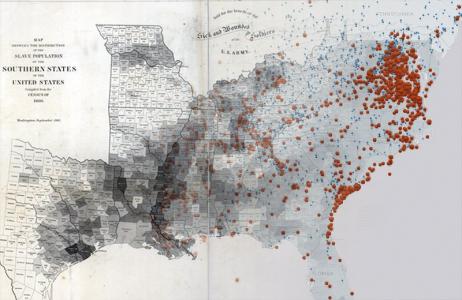Things to Watch: National Endowment for the Humanities Grant Winners

On March 21 the National Endowment for the Humanities announced 22 Digital Humanities Start-Up Grant recipients. These projects originate from a broad set of organizations, and they cover a diverse set of interests. They are both the cutting-edge of contemporary work in digital humanities and the promise of tremendous future output.
The grants, ranging in size from $24,808 to $50,000, are intended to support "projects that employ digital technology to improve humanities research, education, preservation, access, and public programming," and "to encourage collaboration across national and disciplinary boundaries."
With this in mind, let's take a moment to look at some of these projects.
There are several digital textuality recipients. The Abraham Lincoln Presidential Library and Museum Foundation's Is That You, Mr. Lincoln?: Applying Authorship Attribution to the Early Political Writings of Abraham Lincoln will utilize automated authorship attribution tests to determine if Abraham Lincoln may have anonymously written newspaper articles early in his political career. Another, Tesserae: A Search Engine for Allusion by the SUNY Research Foundation, will be utilized to "develop a computational tool to detect and analyze literary allusions, with an initial focus on Latin and ancient Greek."
Additionally, there are several recipients working at the nexus of digital visual cultures and other fields. The Digital Dialectic: Forging New Paths of Inquiry in the Humanities project of the National Hispanic Cultural Center seeks to develop a "software and related curricula to allow for the in-depth examination and analysis of visual humanities content within both immersive digital dome and web-based environments." The University of Arkansas' Mapping archaeological landscapes through aerial thermographic imaging project will research the "best techniques for using aerial thermographic imaging to support archeological research," and University of California, Riverside's FACES: Faces, Art, and Computerized Evaluation Systems project will "test the use of facial recognition software in the context of art history, with a long-term goal of assisting in the identification of human subjects in portraiture."
The grant recipients with the most far-reaching potential are a set of initiatives seeking to formulate protocols for future digital scholarship. The Massachusetts Institute of Technology 's Annotation Studio: multimedia text annotation for students project will be "working on the development of an open-source, web-based annotation tool to assist students in interpreting literary texts and other humanities sources." Michigan State University's Building an Open-Source Archive for Born-Digital Dissertations workshop will "explore relevant issues and identify requirements for the development of an archive for the preservation of dissertations that incorporate interactive or dynamic digital media." North Georgia College will be holding a similarly explorative workshop. Their project, Encouraging digital scholarly publishing in the Humanities, is a "workshop for directors of university presses and experts in publishing and peer review working toward developing a sustainable model to increase both institutional and technical support for publishing born-digital, book-length scholarly monographs in humanities."
As we have written about, publishers and consumers are increasingly interested in maximizing the potential of digital publications. This means thinking of how to best utilize the multimedia capabilities of digital publishing. For example, my home discipline is Film Studies. When writing about a film scene, I have to summarize what I have seen and select particular still images to frame my conversation. A born-digital dissertation in my field could, theoretically, insert full scenes or sequences into the text. A born-digital dissertation could potentially include all the films discussed in their entirety in addition to quick links to particular scenes. This would open up the availability of material for critical inquiry, and it would allow for more and better information to be embedded within scholarly work. Now is the time to start developing parameters and models for digital-born scholarship, and now is the moment to explore the possibilities digital academic publishing affords scholars.
This is a necessity, of course, as readers move from books to screens. It has the added bonus of potentially shifting the fraught relationship between research institutions and academic publishers. Digital-born scholarship could very easily be made open access, and we have already documented the increasing clamor to shift academic publishing into open access spaces.
Though these NEH grant projects are still in the incubation period, their outcomes have the potential to deeply affect the very firmament of academic scholarship.